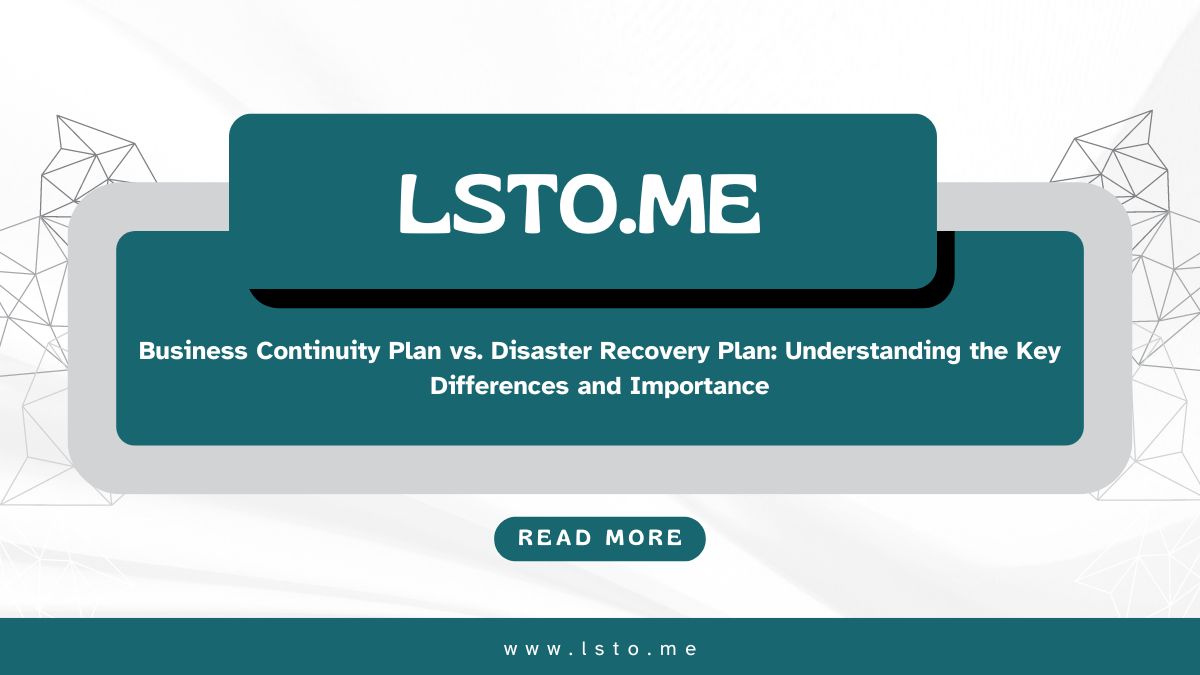
In today’s fast, tech-driven business world, firms must prepare for disruptions. Many threats, from natural disasters to cyberattacks, can disrupt business. To reduce risks and ensure resilience, businesses create two plans. They are a Business Continuity Plan (BCP) and a Disaster Recovery Plan (DRP). These two plans are related. But, they serve different purposes and use distinct strategies. This guide will explore the differences between a BCP and a DRP. It will cover their components and their roles in keeping organizations stable.
What is a Business Continuity Plan (BCP)?
A Business Continuity Plan is a strategy. It ensures an organization can operate during and after a disruption. A BCP’s main goal is to minimize downtime. It must keep critical business functions running. This ensures the organization can serve its customers and meet its obligations.
Key Components of a BCP
Risk Assessment and Business Impact Analysis (BIA)
- Identify potential risks and threats to the organization.
- Evaluate the impact of these risks on business operations.
- Prioritize critical business functions. Focus on their importance and the impact of their disruption.
Recovery Strategies
- Develop strategies to maintain and restore critical business functions.
- Find backup processes, resources, and locations for use if a disruption occurs.
Plan Development
- Document the procedures and protocols to be followed during a disruption.
- Include communication plans, roles, and responsibilities.
Training and Testing
- Train employees regularly on their roles in the BCP.
- Perform regular drills and exercises to test the effectiveness of the plan.
Plan Maintenance
- Regularly review and update the BCP for changes in the business, tech, and org structure.
What is a Disaster Recovery Plan (DRP)?
A Disaster Recovery Plan is a part of a BCP. It focuses on recovering IT systems and data after a disaster. A DRP’s main goal is to restore IT systems quickly. This minimizes data loss and resumes normal business operations.
Key Components of a DRP
Risk Assessment and Business Impact Analysis (BIA)
- Identify potential IT-related risks and threats.
- Evaluate the impact of these risks on IT systems and data.
Recovery Strategies
- Develop strategies to recover IT systems, data, and applications.
- Identify alternative data centers, backup systems, and cloud services.
Plan Development
- Document the procedures and protocols to be followed during an IT disaster.
- Include detailed recovery steps for systems, applications, and data.
Backup and Recovery Procedures
- Implement regular data backup procedures.
- Backups must be stored securely. They must be quickly accessible in a disaster.
Training and Testing
- Train IT staff regularly to ensure they know their roles in the DRP.
- Perform regular drills and simulations to test the effectiveness of the plan.
Plan Maintenance
- Regularly review and update the DRP. It must reflect changes in technology, IT, and the organization.
Differences Between BCP and DRP
A BCP and a DRP are both vital for resilience. But, they differ in scope, focus, and execution.
Scope
- BCP: Covers all aspects of business operations, including human resources, facilities, supply chain, and customer service.
- DRP: Focuses specifically on IT systems, data, and applications.
Focus
- BCP: Ensures the continuity of critical business functions and services during and after a disruption.
- DRP: Ensures the recovery and restoration of IT systems and data following a disaster.
Execution
- BCP: Involves cross-functional teams and requires coordination across various departments.
- DRP: Primarily involves IT staff and technical resources.
Importance of BCP and DRP
Business Continuity Plan (BCP)
Minimizes Downtime
A BCP minimizes downtime. It ensures critical business functions can operate during a disruption. This is essential for maintaining customer trust and meeting contractual obligations.
Protects Revenue
A BCP protects revenue and cuts losses from disruptions. It does this by keeping operations running.
Enhances Reputation
A strong BCP helps organizations respond to disruptions. This can boost their reputation and build customer confidence.
Regulatory Compliance
Many industries have regulatory requirements for business continuity planning. A BCP helps meet regulations and avoid fines and penalties.
Disaster Recovery Plan (DRP)
Protects Data
A DRP protects critical data. It ensures regular backups and quick data restoration after a disaster.
Restores IT Systems
A DRP focuses on IT recovery. It ensures fast recovery of systems and apps, minimizing business disruption.
Reduces Downtime
A good DRP cuts downtime from IT disruptions. It lets the organization resume operations faster.
Mitigates Financial Loss
By reducing downtime and data loss, a DRP helps mitigate the financial impact of IT disasters.
Integrating BCP and DRP
BCP and DRP have different purposes. But, they are complementary. They should be part of a comprehensive business resilience strategy. Here are some best practices for integrating BCP and DRP:
Unified Risk Assessment and BIA
Do a unified risk assessment and BIA. Identify threats and their impact on business operations and IT systems.
Coordinated Planning
Ensure BCP and DRP plans align with organizational goals.
Cross-Functional Teams
Involve cross-functional teams in BCP and DRP planning. This will ensure that all aspects of the organization are considered.
Regular Training and Testing
Train employees regularly on the BCP and DRP. This ensures they know their roles and that the plans work.
Continuous Improvement
Regularly review and update both BCP and DRP. This is to account for changes in the business environment, technology, and structure.
Conclusion
In a complex, connected world, organizations must recover from disruptions to succeed. A Business Continuity Plan (BCP) and a Disaster Recovery Plan (DRP) are vital to resilience. They are key parts of a resilience strategy. They are both essential. They have different purposes. But, they are complementary. They should be integrated. This will help organizations maintain operations and recover quickly from any disruption. Organizations can boost resilience, protect revenue, and build customer trust. They should understand the differences between BCP and DRP. They must also apply best practices for integrating them.




